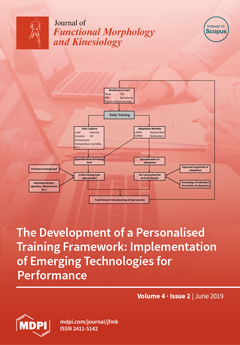Open AccessReview
Nordic Walking Promoted Weight Loss in Overweight and Obese People: A Systematic Review for Future Exercise Prescription
by
Stefano Gobbo, Valentina Bullo, Enrico Roma, Federica Duregon, Danilo Sales Bocalini, Roberta Luksevicius Rica, Andrea Di Blasio, Lucia Cugusi, Barbara Vendramin, Manuele Bergamo, David Cruz-Diaz, Cristine Lima Alberton, Andrea Ermolao and Marco Bergamin
Cited by 10 | Viewed by 7010
Abstract
The aim of this systematic review was to analyze the effect of Nordic Walking (NW) on anthropometric parameters, body composition, cardiovascular parameters, aerobic capacity, blood sample, and glucose tolerance in overweight and obese subjects. The main keywords “Nordic Walking” or “Pole Walking”, associated
[...] Read more.
The aim of this systematic review was to analyze the effect of Nordic Walking (NW) on anthropometric parameters, body composition, cardiovascular parameters, aerobic capacity, blood sample, and glucose tolerance in overweight and obese subjects. The main keywords “Nordic Walking” or “Pole Walking”, associated with either “obese”, “obesity”, “overweight”, or “weight loss” were used on the online database MEDLINE, PubMed, SPORTDiscus and Scopus. Additionally, references of the studies included were screened to identify eligible articles. Applying the inclusion and exclusion criteria, ten manuscripts were considered as eligible for this review. The results of the studies were categorized in several domains with regard to “anthropometric parameters and body composition”, “cardiovascular parameters and aerobic capacity”, and “blood sample and glucose tolerance”. The results showed positive effects on the anthropometric parameters, body composition, cardiovascular parameters, blood sample, and glucose tolerance. The greatest improvements were observed in supervised and high weekly frequency of NW interventions. NW could be considered as an effective modality through which to involve the obese in physical activity. For weight loss, NW should be prescribed 4–5 times per week, at least 60 min per session, preferably combined with diet control.
Full article
►▼
Show Figures






